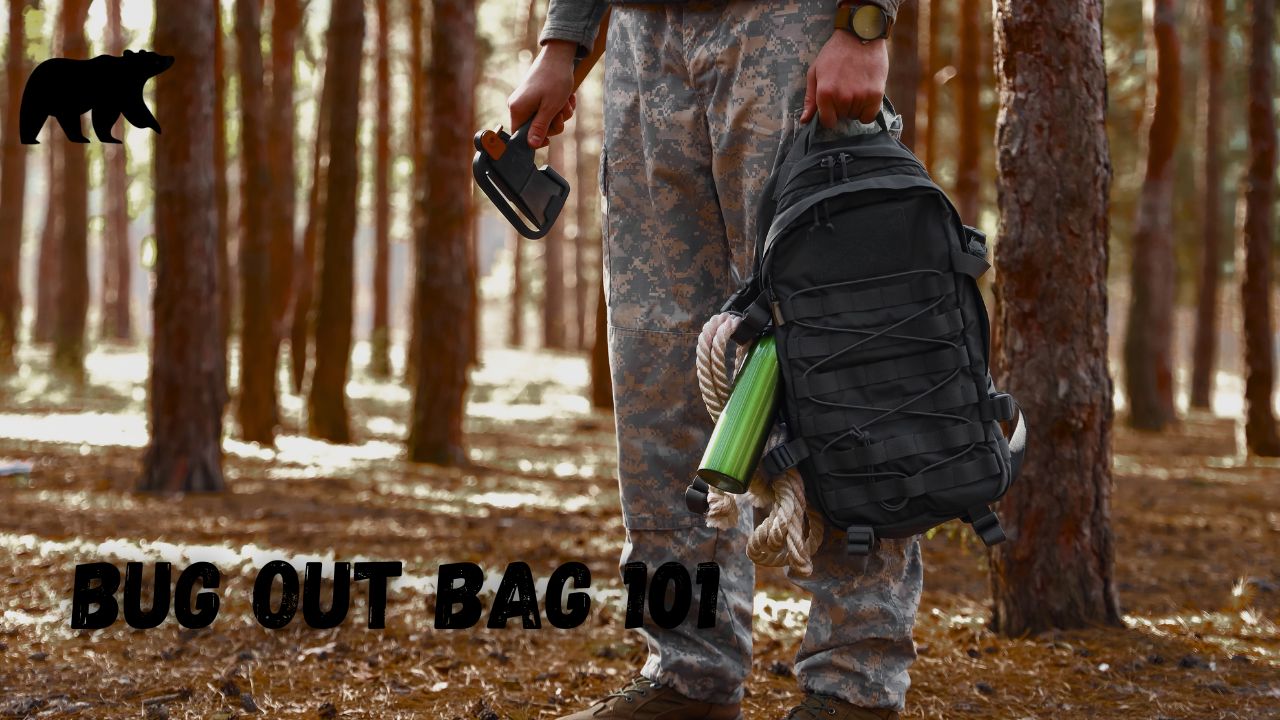In a disaster or emergency, having a well-stocked bug out bag can mean the difference between life and death. A bug out bag is a portable backpack filled with essential gear and supplies that allows you to quickly evacuate your home or location without scrambling to gather critical items. In this article, we’ll dive into the world of bug out bags, exploring what they are, why you need one, and how to create a comprehensive checklist for your own kit.
What is a Bug Out Bag?
A bug out bag, also known as a 72-hour kit or go bag, is designed to contain everything you need to survive for at least 72 hours when evacuating a disaster. It’s essentially a portable emergency kit that allows you to quickly and efficiently leave your home with confidence during an emergency evacuation order.
Think of it like this: imagine waking up in the middle of the night to the sound of sirens or hearing news of a devastating earthquake, flood, or terrorist attack happening nearby. You need to get out of the area as fast as possible, but you can’t just grab your keys and go – you’ll also need food, water, first aid supplies, and other essential gear. That’s where a bug out bag comes in.
Why Do I Need a Bug Out Bag?
- Natural Disasters
- Mother Nature can be unpredictable, and disasters like earthquakes, hurricanes, wildfires, and floods can strike at any moment. A bug out bag ensures that you have a portable kit with essential supplies to help you survive until rescue or relocation.
- Civil Unrest or Riots
- In times of civil unrest or riots, having a bug out bag can save your life. With a kit packed with essentials like food, water, first aid, and communication tools, you’ll be better equipped to navigate the situation safely.
- Power Outages or Grid Failures
- Power outages can occur due to various reasons such as storms, cyberattacks, or infrastructure failures. A bug out bag will keep you prepared for extended periods without electricity, with supplies like flashlights, batteries, and a portable charger.
- Pandemics or Disease Outbreaks
- In the event of a pandemic or disease outbreak, having a bug out bag can help you avoid crowded areas and reduce your risk of exposure to infected individuals. With essential medical supplies and hygiene items, you’ll be better equipped to stay safe.
- Economic Collapse or Social Unrest
- Economic collapse, social unrest, or widespread protests can lead to chaos and destruction. A bug out bag will provide a sense of security, allowing you to quickly gather your essentials and leave the situation behind.
- Terrorist Attacks or Emergencies
- Terrorist attacks or other emergencies like chemical spills or gas leaks require swift evacuation. With a well-stocked bug out bag, you’ll be prepared to respond quickly and stay safe until help arrives.
- Personal Safety
- A bug out bag can serve as a personal safety net in situations where your home or usual escape routes are compromised. With essential supplies like food, water, and first aid, you’ll have the means to protect yourself and loved ones.
- Climate Change-Related Disasters
- Climate change is leading to an increase in extreme weather events like heatwaves, droughts, and storms. A bug out bag will help you prepare for these types of disasters, with supplies like water purification tablets, warm clothing, and emergency blankets.
- Evacuation Scenarios
- In cases where evacuation is necessary due to a disaster or emergency, having a bug out bag can ensure that you’re prepared to leave quickly and safely.
- Peace of Mind
- Lastly, owning a bug out bag provides peace of mind knowing that you’re ready for the unexpected. With essential supplies at your fingertips, you’ll be more confident in your ability to handle any situation life throws your way.
What Should I Include in My Bug Out Bag?
A comprehensive bug out bag should include the following essential gear and supplies:
- Water and Food: Pack at least 3 days’ worth of non-perishable food, such as energy bars, dried fruits and nuts, and MREs (Meals Ready to Eat). Don’t forget a water filter or purification tablets to ensure access to clean drinking water.
- First Aid Kit: A well-stocked first aid kit should include basic medical supplies like bandages, antiseptic wipes, pain relievers, and any prescription medications you may need.
- Shelter and Warmth: Include a lightweight tent, sleeping bag, and warm blanket to ensure you have shelter from the elements.
- Communication Tools: Pack a portable radio, whistle, and other communication devices to stay informed about the situation and call for help if needed.
- Lighting and Safety: Bring a flashlight, extra batteries, and any personal safety items like pepper spray or a self-defense tool.
- Personal Hygiene Items: Don’t forget toilet paper, hand sanitizer, and any essential hygiene items you may need to maintain personal health.
- Multipurpose Tools: Include a Swiss Army knife, pliers, screwdriver, and other multipurpose tools that can help with tasks like opening cans or cutting branches.
- Clothing and Extra Gear: Pack extra clothing, including warm layers, gloves, and sturdy shoes, as well as any essential gear like sunglasses or a hat.
| CATEGORY | ITEM EXAMPLES |
|---|---|
| Water and Food | Bottled water (at least 1 liter per person per day), non-perishable energy bars, MREs (Meals Ready to Eat) |
| First Aid Kit | Bandages, antiseptic wipes, pain relievers, antibiotics, etc. |
| Shelter and Warmth | Tent, sleeping bag, blanket, warm hat, gloves |
| Lighting | Flashlight, extra batteries, candles, matches |
| Communication | Cell phone with charger, two-way radio, whistle |
| Personal Documents | ID, insurance cards, cash, credit cards |
Tips for Building Your Bug Out Bag
When building your bug out bag, remember to:
1. Assess Your Needs
Before starting your bug out bag, take stock of your personal needs and circumstances. Consider factors such as:
- The number of people in your household
- Any medical conditions or special needs
- Your occupation and work requirements
- Your living situation (urban, rural, etc.)
- Your available space for storage
2. Choose a Bag
Selecting the right bag is crucial to your bug out plan. Consider factors such as:
- Size: Look for a bag with a capacity of at least 30 liters
- Material: Opt for durable, water-resistant materials like nylon or polyester
- Comfort: Choose a bag with padded shoulder straps and back support
3. Prioritize Essential Items
When it comes to packing your bug out bag, prioritize essential items that will keep you alive in an emergency situation. These include:
- Water purification tablets or filter
- Food (at least 3 days’ worth)
- First aid kit
- Shelter and warmth (tent, sleeping bag, etc.)
- Communication device (phone, radio, etc.)
4. Consider Personal Hygiene
Personal hygiene is often overlooked in bug out bag planning, but it’s essential for maintaining morale and preventing illness. Be sure to include:
- Toilet paper and hand sanitizer
- Biodegradable soap and toothbrush
- Moist towelettes or baby wipes
5. Add Tools and Equipment
In addition to personal items, consider adding tools and equipment that will aid in your survival. These may include:
- Multi-tool or pocket knife
- Fire starter ( matches, lighter, etc.)
- Flashlight or headlamp
- Extra batteries
6. Don’t Forget the Small Stuff
It’s easy to overlook small but essential items like:
- Socks and undergarments
- Prescription medication
- Important documents (ID, insurance cards, etc.)
7. Review and Update Regularly
Finally, remember to review your bug out bag regularly to ensure that all items are still functional and not expired. Update your kit as needed to reflect changes in your personal circumstances or new technologies.
The Last Word
In the event of an emergency, having a well-stocked bug out bag can be a game-changer. By including essential gear and supplies in a portable backpack, you’ll be prepared to quickly evacuate your home or location without scrambling to gather critical items. Remember to analyze your environment, tailor provisions to your situation, and review your kit regularly to ensure you’re always ready for anything life throws at you.
So, what are you waiting for? Start building your bug out bag today and take the first step towards urban survival!

